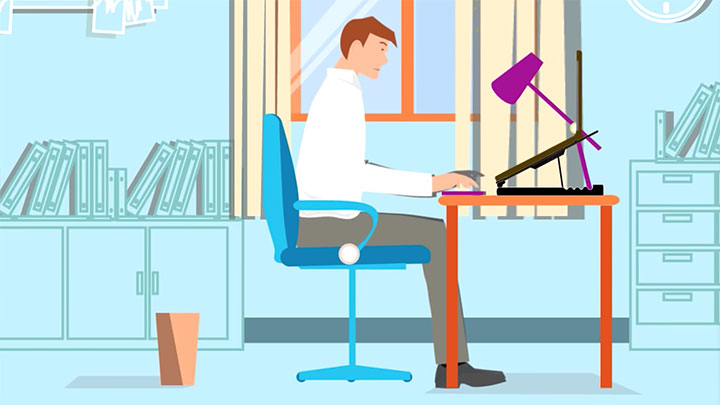Not everyone has a desktop workstation at home, and most of us are using laptops. However, laptops were created for short-term portable use, thus the ergonomics that come with using laptops long term are not the best. Using a laptop, it is hard to balance your forearms, elbows, and head positions because either your head is flexed downwards too much or your wrists are above the elbow. To make the best out of a bad situation, here are some tips you should try.
Take micro-breaks every 1-2 hours and get out of your chair. Taking breaks helps to relieve any eyestrain, prevents your body from getting too stationary, and do some corrective exercises or stretches, some which can be observed on our Ergonomic Stretches page.
Avoid leaning forward towards your laptop. People have a tendency to lean forward in order to get a closer look at their laptop screen. However, this creates contact stress of your wrists to the table, which can compress the median nerve in your wrist which may lead to carpal tunnel syndrome.
When in a seated position on your desk, use books or anything you have around the house to lift the laptop up to get the top of the screen at eye level. With the lifted laptop, use a separate keyboard connected to your laptop on the table. Keyboards are a low-cost alternative to purchasing a monitor. Ensure that your back has proper lumbar support, such as a pillow, and your feet are flat on the ground.
For an alternative standing position, opt to use your kitchen table. Similar to the seated position, use books or anything around the house to lift the laptop up so that the top of the screen is at eye level. While using a separate keyboard, lift the keyboard to elbow level using more books or anything around the house. Take turns with the seated and standing position to decrease strain on the body.
Most importantly, do not forget to see your physician if any pain further develops.

